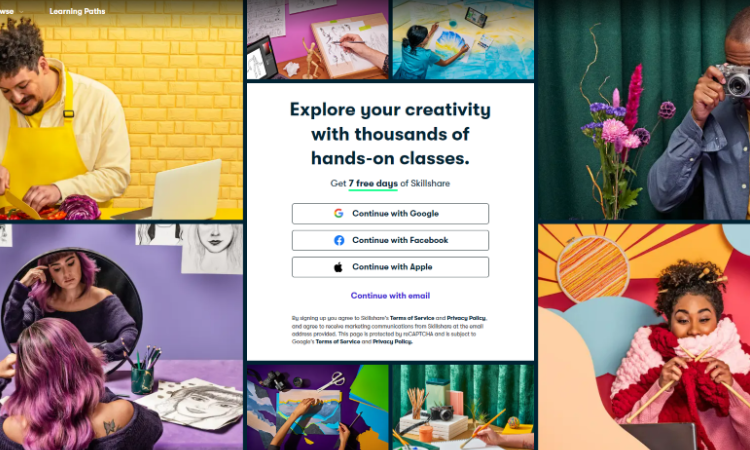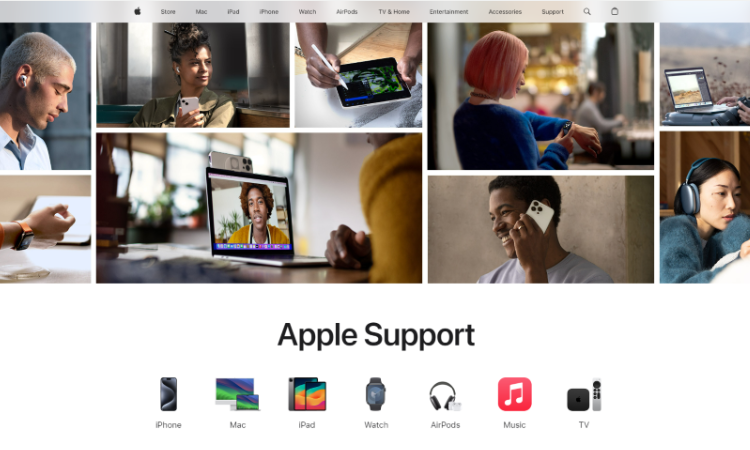

If you’re interested in building a sustainable community that pays well, this guide has everything you need. With so many different types of communities to choose from, you can build one tailored to your own interests and attract a wide range of like-minded individuals who are just as passionate as you. Keep reading to find out how.
An online community is a virtual space that brings together individuals with shared interests, passions, goals, or purposes. Just like a physical community, members of online communities can collaborate on projects, ask for advice on certain topics, develop skills, or just form connections and make friends. However, unlike physical communities, online spaces are boundless, transcending the geographical limitations that hinder physical spaces.
Furthermore, online communities are not the same as social media communities, where casual interactions take priority over curating meaningful relationships. Thriving and engaged online communities can have a wealth of benefits for an individual’s career, skillset, social life, and even mental health. In fact, numerous studies have shown that belonging to an online community can even eliminate loneliness and lower depression.
Some benefits of online communities include:

[Source: SkillShare website.]
Learning communities primarily offer learning experiences, provide educational resources, and encourage members to exchange knowledge. Examples of learning communities include online courses, academic forms, and even online study groups. Individuals can get help on a range of different topics, from essay writing to DIY.
Some famous learning communities include SkillShare, The Student Room, and Masterclass.
Looking to set up an online learning community? Try Teach.io. Teach is an all-in-one learning platform that gives you all the tools you need to master the classroom. Try their 14-day free trial.
CoPs bring together professionals in certain fields to share insights, best practices and experiences. You’ll often find these professional networks made up of teachers, software developers, or healthcare professionals.
One example of this is Elpha, a community of over 100,000 women in tech. This community aims to help women meet new people and make new friends, discover new and exciting career opportunities, offer advice, and encourage others to share their expert knowledge.
Micro communities are smaller spaces that center around specific interests or niches. Examples include book clubs, specialized hobby groups (such as bird watchers or plant collectors), or even neighborhood associations. One example is Epic Fantasy Fanatics, a small, sustainable book club on Facebook that encourages its members to read and talk about fantasy.
The #1 to make money online with TikTok Search (FREE TRAINING)

Brand communities are formed around specific brands and companies. Members can talk about products, share their experiences, connect with likeminded individuals, and even speak to representatives of the company. Some examples include Apple’s support community, or gaming company forums for fans.
The main purpose of a customer community is to provide customer support. Community members have the freedom to ask questions, provide feedback on products, and talk to company representatives.
These communities aren’t just great for customers; companies can use them to get real-time feedback and optimize their products. Examples of these communities include forums for tech companies and customer feedback groups for consumer goods.

[Source: If Books Could Kill Patreon.]
Membership or subscription-based communities usually require payment for access. This may include a one-time entry or subscription fee. However, payment isn’t always the case. These communities offer high-quality content, interactions, or knowledge that community members can’t get anywhere else.
Professional guilds, premium content sites, or member-only clubs are all examples of membership communities.
For example, If Books Could Kill is a Patreon community that gives access to podcast episodes, an exclusive discord service, and a say in what the creators talk about next, depending on which subscription tier members choose.
We may have highlighted why individuals choose to join a community, but creating a community comes with a range of benefits for businesses, too. Here are just some of the things a successful and sustainable community can do for your brand:
When these elements come together, they will create a thriving community flywheel that will automatically drive business growth. But, to create a sustainable community, you first need to master an optimal community design that suits your brand and niche.

With the saturation of communities in online spaces, it’s important to define your niche or community focus. Narrowing down to a specific niche will ensure you attract and retain the right members, helping to create a tight-knit community that engages with content curated specially for them. This will help keep your members interested and your community thriving.
To build a sustainable paid community, you need to understand your audience demographic, which is made up of important information like their age, gender, and location. Think about psychographics, too, such as your audience’s interests, values and beliefs, and lifestyle. This information is imperative to curating content that appeals to them personally.
To discover your audience demographic, research similar communities and their existing audiences. For example, a spirituality and wellness community may consist of women between 20 – 40 years old who enjoy spending time with their family, meditation, and reading. This specific information will help you create posts, video content, or even eBooks that will appeal to your audience.
One of the best ways to understand your audience is by creating detailed, fictionalized personas that represent the ideal members of your community. Think about the type of person you wish to attract. Then, create a character profile of them, detailing characteristics, goals, behaviours, and even challenges they may have to overcome.
For example, if you’re building a community of dog lovers, you may create the character of Sarah, a 33-year-old lover of nature who enjoys spending time with her family.
Creating personas will help you design content to attract the members you believe will benefit most from your online space. By keeping fictionalized personas in mind, you can develop effective community features and content quickly. This will enhance engagement and audience satisfaction, and you’ll end up with a thriving community of like-minded individuals who benefit from your online space.
Personas shouldn’t be set in stone. As your community grows and you have access to more real community data, adjust your personas and optimize your content. For example, if you set up a baking community with the intention of attracting 40-year-old mums, but a large portion of your audience are in their 20s, adjust your personas accordingly and curate content that aligns with them. This will help you improve your online space and build a sustainable community.
KPIs are essential to monitoring the health of your online space and creating a sustainable community. Otherwise known as “key performance indicators,” KPIs are metrics you can use to measure different aspects of your business or community. Here’s how to use them to your advantage.
Before you start tracking KPIs, outline your long-term community goals and objectives. For example, do you plan on using your community to enhance your business’s customer engagement, improve the outreach of a non-profit, or even just make connections? Whatever your intentions, make them clear. This way, you’ll know which KPIs to track, saving you time and effort in the long run.
Your target audience needs to align with your goals. Your community should attract members who benefit from the objectives of the community. If your goals and audience aren’t in alignment, you’ll lose members or end up with an unengaged group of individuals who won’t benefit from your content.
To effectively measure the success of your community, your KPIs need to link directly to your goals. For example, if you’re a learning community that teaches members new skills, an example metric to track is video engagement. Which videos are members finding particularly useful? Are there any they skip? This will help you optimize your content for future members.
Possible metrics to track include:
Like with any group, laying out clear guidelines is essential to your community’s health and the safety of your members. If your community members feel unsafe, they won’t engage with your content. Or, worse – they will leave your community and find a different one.
Guidelines act as a foundation framework for community members to adhere to. It dictates acceptable behaviors, which, in turn, creates a safe environment where all members feel respected and protected.
Clear guidelines can also prevent conflict in the long run, leaving little room for misunderstandings. By setting clear boundaries and expectations, members won’t be tempted to cross them, which will reduce disputes.
Not sure which rules to lay down? Check out our community guideline examples.

[Source: Teach.io.]
With a variety of community platforms available offering different features, it can be a challenge to choose the right one for your community. Popular community platforms include Discord, Facebook, Slack, Kajabi, and Teach.io.
As a community leader, there are lots of strategies you can implement to encourage initial member interaction. Here are just a few:
Once members have made their introductions and are settling in, it’s important to spark discussions, as this will help create an engaged community. The more engaged your community is, the more sustainable it’s likely to be. Here are some ideas for online community-building activities:
If you want a sustainable paid online community, it’s important to implement strategies that will help nurture and grow it. It’s important to promote your community and content, letting your target audience know it exists. There are different ways to do this, such as using social media to promote community content. For example, many community leaders on Patreon will show snippets of content on social media, enticing people to sign up for their community.
You can also engage in trends related to your community’s niche, especially with TikTok and Instagram reels. Take social media one step further by using targeted ads for more reach, and watch your community grow.
Actively distribute content across all your platforms to reach a bigger and broader audience. Furthermore, partnering with popular blogs, influencers, or ambassadors related to your niche will get more eyes on your community.
The #1 to make money online with TikTok Search (FREE TRAINING)

Referral programs are a great way to build a sustainable community of active members. Create a program that rewards members of your community for inviting others into the group. Rewards could include exclusive content, discounts on products, or even physical goods, depending on your niche. Pick something that will resonate with your audience.
Make sharing content and referrals easy through social media or email. Create shareable content such as images, infographics, articles, or even videos, and include CTAs to encourage others to join your community. This will keep bringing new people in, helping you to curate a thriving and sustainable space.
Collaborating with others is another great way to help build your community. Collaborate with other brands, organizations and influencers who can bring your community to fresh new eyes. However, it’s also important that your collaborators share the same values, beliefs and interests as you, so your community and content appeal to their audience.
Let influencers (or even celebrities) collaborate with you through live events. Plan “community takeovers,” where the influencer takes over running the community for a day. Host question and answer sessions or panels. Make sure to advertise your takeover on social media platforms to encourage more people to join your community.
To build a sustainable paid community, think long-term. Here are a few areas that will contribute to the development of your space:

[Source: Canva]
For your community to thrive and be stable, it must engage your audience, no matter your niche. Make sure to regularly monitor your community’s engagement, as this will help you assess whether members are enjoying themselves. You can do this by using engagement metrics. Keep an eye on shares, likes, comments, and how many people are leaving your space.
Asking for direct feedback is a sure way to understand what’s making your community tick. Use surveys and polls to ask members which type of content they find engaging and what they’d like to see more of. You could also consider anonymous suggestion boxes, as this will allow community members to speak their minds freely and ensure you get honest feedback, letting you work out which areas need improving, so you can adjust accordingly.
Using the insights you gain from metric analytics and specific member feedback will help you adjust the content of your community accordingly. For example, the data may show less engagement with Q&A sessions or video content. This will show you that customers aren’t engaged, and you should focus on producing content that they enjoy. Continue to use posts that members engage with and introduce new content ideas to keep things fresh. This constant approach of refreshing and adjusting will ensure your community is never stale and that you’re always adhering to your member’s needs.
Getting your community involved in big decisions will make them feel included. Create polls, surveys and discussion forums to ask your community for advice before introducing a new feature. Similarly, if community members ask for specific features, take the time to implement them. This will show them you care about their thoughts and opinions, making them feel more included in the community, improving overall engagement.
To create a sustainable paid online community, it’s important to check out what strategies other successful communities are implementing. Here are a few examples of thriving, paid communities. By studying them, you can take what’s working well and use them to your advantage.
Community Type: Learning Community
Duoling is a community centered around learning language. With over 40 languages to master, this platform simplifies it, helping users learn through small, bite-sized amounts of content. It harnesses community power to create a fun environment and enhance user retention.
By using these strategies, Duolingo creates a supportive learning environment that users keep coming back to.
Community Type: Community of Practice
Stack Overflow is a community where developers can learn and share knowledge with each other, helping like-minded individuals get a better understanding of coding and software development.
These features make Stack Overflow a fantastic community platform for boosting team productivity and collaboration, ensuring users get the best, most up-to-date content. It’s no wonder the community is the go-to technical forum for professionals and tech enthusiasts.
Community Type: Brand Community
This beauty community is built around the Sephora brand, acting as a hub for beauty enthusiasts all over the United States. They can give product reviews, share tips and tricks, and stay on top of the latest beauty trends.
Sephora Beauty Insider excelled at enhancing customer loyalty. With a tier-based system in place, starting with a free subscription to the community, members get access to a whole host of exclusive rewards.
Community Type: Membership Community
This membership community was originally created by Pat Flynn and has evolved into a hub of knowledge for online businesses. Community members can learn how to build an online business with tried-and-true methods. This community boasts over 1,200 expert entrepreneurs.
With a wealth of knowledge available from experts in the industry and a whole host of amazing resources to take advantage of, Smart Passive Income is a dynamic community that can help budding entrepreneurs take their online business to the next level.
Community Type: Membership Community
Marie Forleo’s B-School is an online learning environment that gives budding entrepreneurs the tools to build their businesses. Advertised as the “gold-standard online training experience,” this community has helped over 80,000 entrepreneurs across 650+ industries create meaningful and profitable businesses.
With a whole host of high-quality resources offered, it’s no wonder that Marie Forleo’s B-School is so successful. From product-based businesses to service-based businesses, this community provides support where its members can truly thrive.
Community Type: Membership Community
Side Hustle was originally created by Chris Guillebeau, author of “The $100 Startup. It’s a community that helps individuals grow a side business without quitting their day job.
Side Hustle School features a wealth of resources, from guides to workshops and events that those interested in business can use to their advantage. It’s this wealth of knowledge and podcast format that makes this community so sustainable.
Creating your community has never been easier with Teach’s all-in-one platform. Get everything you need in one place. Whether you’re looking for video integration, want to host live events, or need to connect with your students one-on-one, Teach is here to support you. Try their 14-day free trial now.
Although building a sustainable paid online community may seem daunting at first, following the fundamentals we’ve outlined above will act as a framework for your success. The most important thing to remember about building a community is that your community members come first, and all actions you take should be with them in mind, whether it’s implementing new content or trying out a new feature. Make sure of audience feedback and tap into their needs. Once you start to curate your community around them, you’ll be able to create a dynamic and sustainable paid community.





